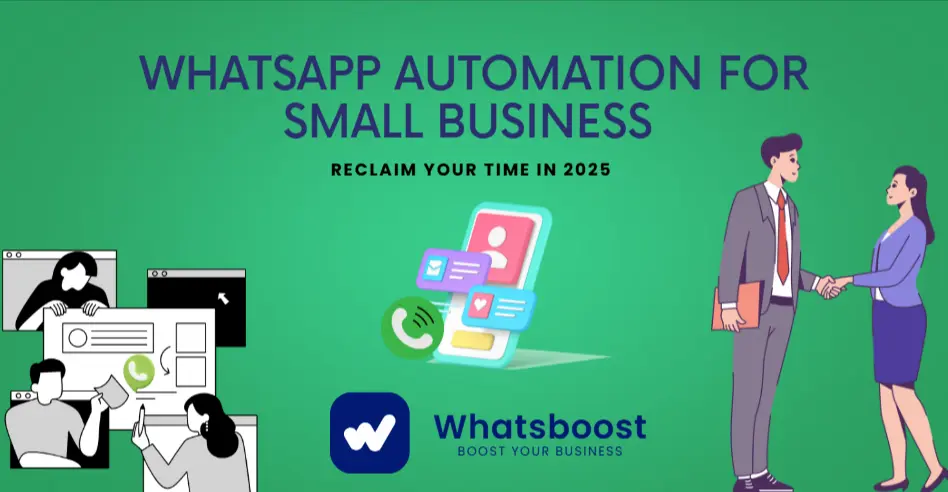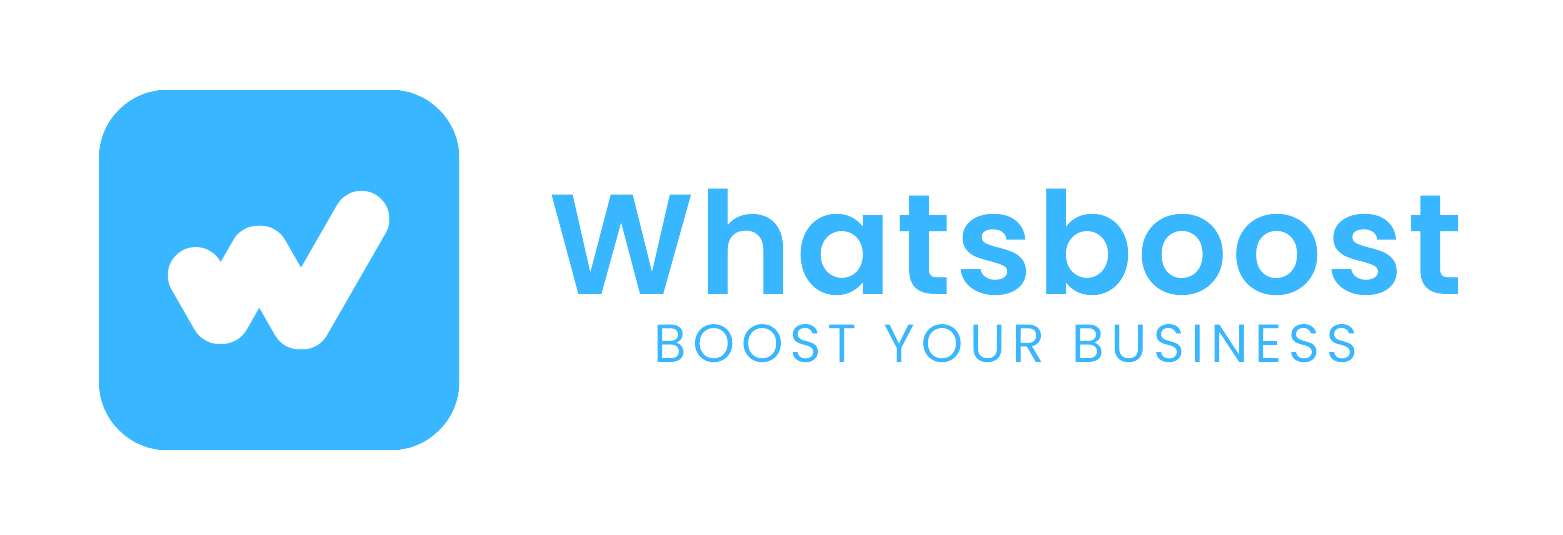
WhatsApp Automation for Small Business: Reclaim Your Time in 2025
WhatsApp automation for small businesses: Respond instantly, recover lost sales, reduce no-shows. Complete guide to implementing smart automation without technical skills.
You're spending half your workday answering the same questions on WhatsApp. "What are your prices?" "Where's my order?" "Are you available tomorrow?"
Meanwhile, the strategic work that actually grows your business—building partnerships, refining your product, closing high-value deals—gets pushed to evenings and weekends.
Most customers now expect instant responses on messaging apps. But you can't be online every hour. Late replies cost you sales. Manual responses burn out your team.
The solution isn't hiring more people. It's implementing smart WhatsApp automation that handles routine conversations while you focus on what matters.
Why Manual Messaging is Holding You Back
Every business owner faces the same bottleneck: customer conversations that are important but repetitive.
When you're manually responding to every message, several things happen:
Your time gets fragmented. You can't focus on deep work when you're constantly context-switching to answer basic questions.
Response quality varies. Your morning replies are detailed and helpful. By evening, you're exhausted and cutting corners.
Leads slip through the cracks. Someone messages at midnight. By the time you respond the next afternoon, they've already bought from a competitor who replied instantly.
You can't scale. Growing your business means more customers, which means exponentially more messages. Eventually, you hit a ceiling.
Automation breaks this pattern. It handles the predictable parts of customer communication, ensuring consistent quality while freeing your calendar for strategic thinking.
Five Essential Automations Every Small Business Needs
Instant Welcome and Smart Routing
When someone contacts your business for the first time, those opening seconds matter enormously. A delayed response signals disinterest. An immediate, helpful reply builds confidence.
Set up an automation that greets new contacts within seconds and helps them navigate to the right place:
"Thanks for reaching out! I can help you with product information, order tracking, or connect you with our sales team. What brings you here today?"
Based on their response, the system routes them appropriately. Sales inquiries go to your sales queue. Support questions get tagged and prioritized. Simple information requests get answered instantly.
This simple automation transforms your customer's first impression while saving you hours of manual triage.
Implementation through Whatsboost's flow builder takes about twenty minutes.
Proactive Order Communication
The single most common support question in e-commerce is "Where's my package?" It's reasonable that customers want to know, but answering it repeatedly is a poor use of your time.
Instead, proactively update customers at each stage:
When their order is confirmed, they receive instant acknowledgment with full details. When it ships, they get the tracking information automatically. When it's out for delivery, they know to expect it today. When it arrives, they receive confirmation.
The result? Customers feel informed and cared for, while your support inbox stays manageable. This works through direct integration with your e-commerce platform—Shopify, WooCommerce, or whichever system you use.
One small business owner told us their order-related messages dropped from overwhelming to barely noticeable after implementing this single automation.
Recovering Abandoned Carts
Research consistently shows that most online shopping carts get abandoned before purchase. Sometimes customers get distracted. Sometimes they're comparison shopping. Sometimes they have a question that stops them from buying.
WhatsApp is remarkably effective for cart recovery because nearly everyone reads their WhatsApp messages, unlike email which often goes unopened.
Set up a thoughtful sequence: An hour after someone abandons their cart, send a friendly reminder that you've saved it for them. If they still haven't purchased after a day, offer assistance or a modest incentive. After two days, send a final reminder that their saved cart will expire soon.
The key is making these messages helpful rather than pushy. You're genuinely trying to help them complete a purchase they already started.
Many small businesses find this automation alone covers the cost of their entire automation platform through recovered revenue.
Appointment Reminders for Service Businesses
If you run a service business—consulting, fitness training, salon services, medical practice—no-shows directly impact your revenue. Every empty appointment slot is money you can't recover.
Automation dramatically reduces no-shows through timely reminders. When someone books, they immediately receive confirmation with all relevant details. The day before their appointment, they get a friendly reminder. A few hours before, another gentle nudge.
Crucially, make it easy for them to reschedule if needed. When someone can quickly move their appointment rather than simply not showing up, you can fill that slot with another customer.
After their appointment, follow up to ensure they were satisfied. This naturally leads into collecting reviews and encouraging repeat bookings.
Service businesses consistently report that appointment automation is transformative for their scheduling efficiency and revenue predictability.
Strategic Review Generation
Your online reputation directly influences whether potential customers choose you or your competitors. But getting reviews is challenging—you need to ask at exactly the right moment, and you need to handle negative feedback before it becomes public.
Here's an effective approach: After someone receives their order or completes a service, ask them to rate their experience. If they indicate they're happy, immediately make it easy for them to leave a public review with a direct link to your Google or review platform.
If they indicate dissatisfaction, route that conversation directly to someone on your team who can address it privately and make things right. Most unhappy customers just want to be heard and have their problem solved. Give them that opportunity before they leave a public negative review.
This system captures positive reviews when customers are most enthusiastic while protecting your reputation by catching problems early.
Choosing the Right Platform
The automation platform you choose matters significantly. Look for these essential capabilities:
No-code building tools so your team can create and modify automations without technical expertise. You shouldn't need a developer every time you want to adjust a message.
Deep integration with your existing business systems—your CRM, e-commerce platform, calendar, and other tools you use daily. Disconnected systems create more work, not less.
Team collaboration features that let multiple people manage conversations with proper context and handoffs.
Clear analytics showing what's working. You need to see response times, conversation completion rates, and the business impact of your automations.
Reasonable pricing that makes sense for a growing small business, not enterprise-only plans that cost more than hiring a person.
Whatsboost was built specifically for small businesses and includes all these capabilities with straightforward pricing starting at an accessible monthly rate.
Getting Started: Your First Week
Begin by observing your current message patterns for a few days. What questions come up repeatedly? Which conversations follow predictable patterns? Where do you spend the most time?
Pick the single automation that would save you the most time or have the biggest business impact. For most businesses, that's either the instant welcome message or proactive order updates.
Build that one automation. Modern platforms make this straightforward with visual builders—no coding required. Test it thoroughly with your team before going live.
Launch it and monitor how it performs. You'll likely need to adjust the wording or timing based on real customer interactions.
Once that first automation is running smoothly, add another. Then another. Each one compounds the benefits of the previous ones.
Most business owners are surprised by how quickly they see meaningful time savings and improved customer satisfaction.
Maintaining the Human Touch
Here's what good automation never does: trap customers in a loop with no way to reach a real person.
Always build in easy escalation to your team. When someone types "I need to speak to a person" or "help," transfer them immediately. If someone seems confused or frustrated with the automated responses, offer human assistance.
Outside business hours, set clear expectations about when your team will be available, while still offering help with common questions in the meantime.
The goal is using automation as a capable assistant that handles routine work, while your human team focuses on complex situations that require judgment, empathy, and creative problem-solving.
Your customers don't mind automation—they mind poor service. If automation improves their experience through faster responses and consistent quality, they appreciate it.
What Business Owners Are Experiencing
Small businesses implementing WhatsApp automation consistently report similar outcomes:
Their support volume becomes manageable without hiring additional team members. Response times that used to span hours now happen in seconds. Customers express appreciation for the quick, helpful responses. Revenue increases through better cart recovery and fewer missed leads.
Perhaps most importantly, business owners reclaim hours in their week for strategic thinking rather than inbox management.
The businesses gaining competitive advantage right now aren't necessarily those with bigger budgets—they're the ones using smart automation to operate more efficiently while maintaining quality relationships with customers.
Your Next Step
You don't need to transform everything overnight. Choose one automation that addresses your most pressing challenge and start there.
If you're overwhelmed by initial inquiries, implement the welcome and routing automation. If order tracking questions dominate your day, start with proactive shipping updates. If you're leaving money on the table with abandoned carts, begin there. If no-shows hurt your service business, start with appointment reminders.
Try Whatsboost with a seven-day trial and build your first automation. Most people complete their first one in under half an hour.
The question isn't whether WhatsApp automation makes sense for small businesses—the benefits are clear. The question is whether you'll implement it while you have a competitive window, or wait until it becomes table stakes in your industry.
Updated: October 2025
